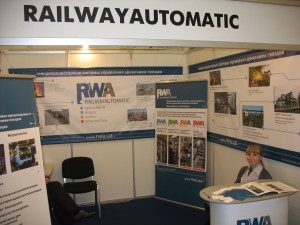Report at seminar organized by the International association «Metro» within the frames of the 2nd international exhibition «The ElectroTrance 2012», on May 14-16 2012, Moscow, Russia
 In recent years our company successfully performed works for MPI implementation at new stations and engine houses of of Kiev and Kharkov subways, as well as revamping of existing stations.
In recent years our company successfully performed works for MPI implementation at new stations and engine houses of of Kiev and Kharkov subways, as well as revamping of existing stations.
However this «experience of implementation» which helps us in each further project, is measured neither in years and nor in number of the launched systems. The «criterion» of this experience for us are the relations with our Customers.
What will be the new system how will pass installation and a starting-up and commissioning and how the system will the system will prove itself in operation, whole range depends on mutual understanding between designers, developers and services of the subways which are responsible both for construction new station, and for operation and maintenance of systems. The station «Vystavochny Centr» of the Kievsky subway where, in our judgment, only due to well coordinated and sometimes even self-denying actions of subway and RWA personnel managed to meet the dead lines fixed by city city authorities became the brightest example.Therefore the relations are our principal acquisition, and the principal result of our «experience of implementation of MPI», that is what we value very much.At the further development of topic concerned to relations between the company developer of control systems and the Customer, it would be desirable to pay attention to the following tendency which already is very well visible in industrial transport and we expect that it will become evident in subways in the nearest future.
This tendency we would call «increasing of share of private capital» in projects of development of infrastructure as a whole and subways in particular. And, thereat industrial transport now is already built for company owner’s cost, so for the subway, quite probably,it may become the project of construction of the new subway line in Kiev which was announced as classic PPP (Public Private Partnership) the project.
It is coming a new category of people with whom it is also necessary to improve the relations, to find a common language-they are investors. The mischief of it is that the language used for communication by these characters differs so much from one the experts of SIL get used to, and we still need to learn it.
I would like to share a little time and to tell, what cost we pay for the study of it, won’t hide, not simple language for us.One of the main terms in language of investors as per our opinion is a coefficient of return of investments. Actually there is a lot of such coefficients, but we will take one of the simply and clear this is ROI (Return of Investment).ROI represents the ratio of the Income from investments to Volume of investments. And if more or less clear that volume of investments for MPI is the cost of an implementation and expenditures for operation and maintenance, whilst with revenues we face difficulties. The control system of trains traffic generally doesn’t earn money. Certainly, it can lower operational expenses, but its principal function is a safety of movement.
We suggest to replace an assessment of the income of investments with an assessment of risks which will be avoided thanks to investments. Such approach will allow to receive a certain coefficient of return of investments by means of which we can evaluate efficiency of investments into security systems. It is necessary to tell that application of such approach involves the need for identification of risks, assessment of possible frequency of appearance of risks and estimation of the damage connected to origin of risk.
After taking the decision for for the control system implementation investors will carry out the analysis and define the list of the significant risk factors affecting to the implementation of train traffic control system. Within such factors can be:
- failures of hard and software;
- IT-risks (attacks, virus threats);
- possibility of extinction of software maintenance and release of hardware.
Further means of neutralization of the risks are developed, allowing to reduce influence of risk factors and to provide achievement of necessary level of efficiency in case of implementation of train traffic control system.
Developing the systems, we initially use such system architecture which gives the chance to resist to the above-stated risks. Among such «useful» characteristics of our systems it is necessary to mention:
- use only of serially made components of leading global manufacturers and absence of «self-made» components;
- application of only special software packages for software development of controllers and the human machine interface (automated workplace of manager), corresponding to branch standards for such class of software (IEC 61131);
- use of only standard, public, industrial interfaces and data transfer protocols;
- absence in system of the undocumented or «closed» program units.






